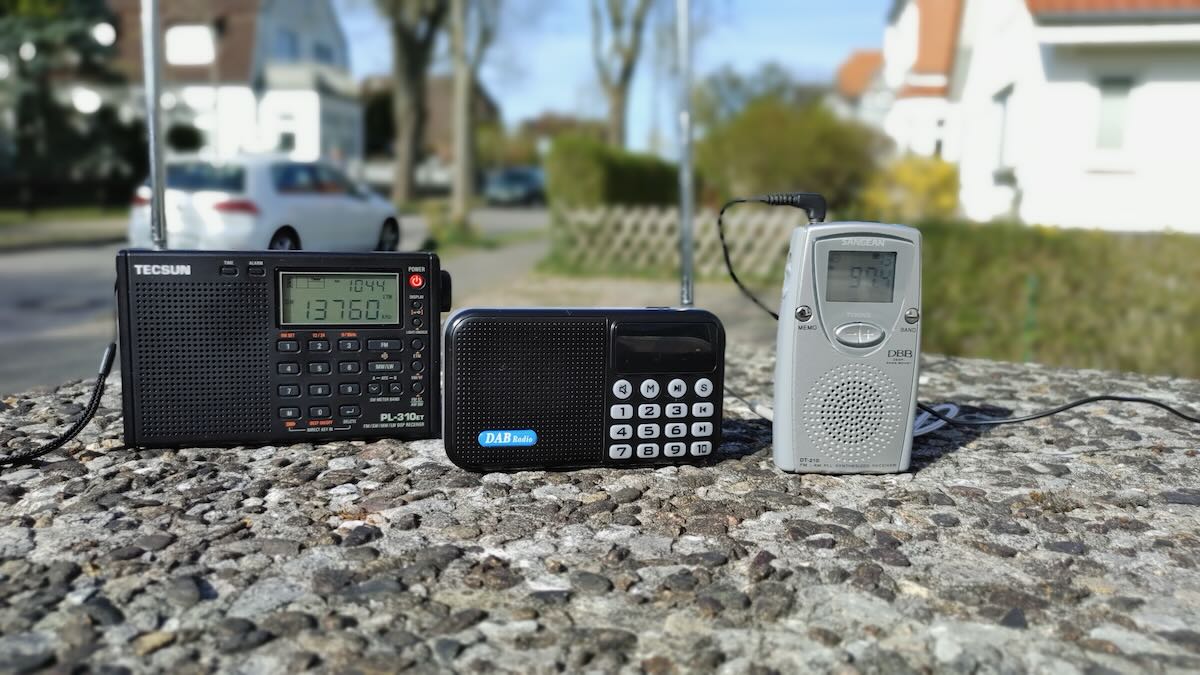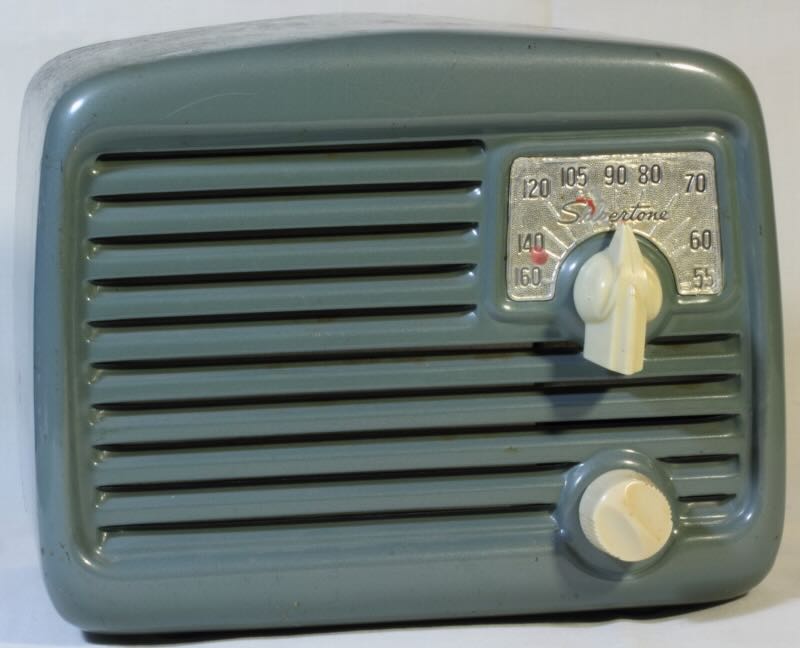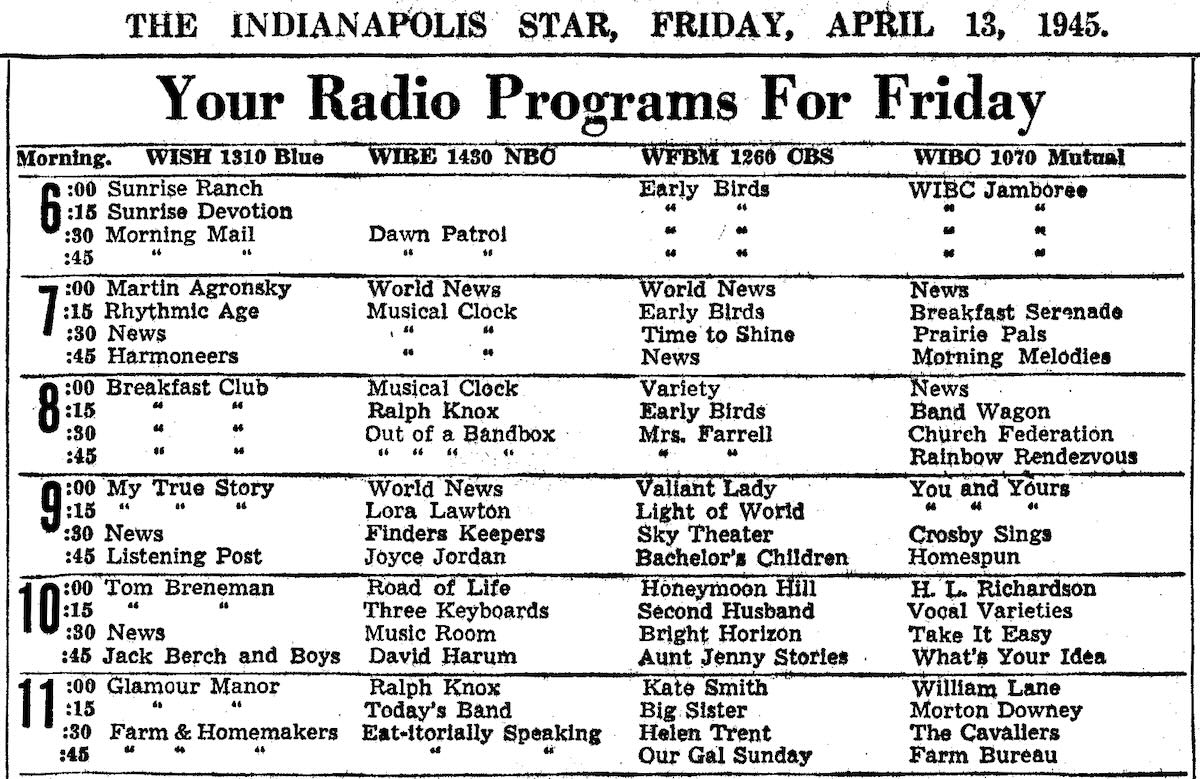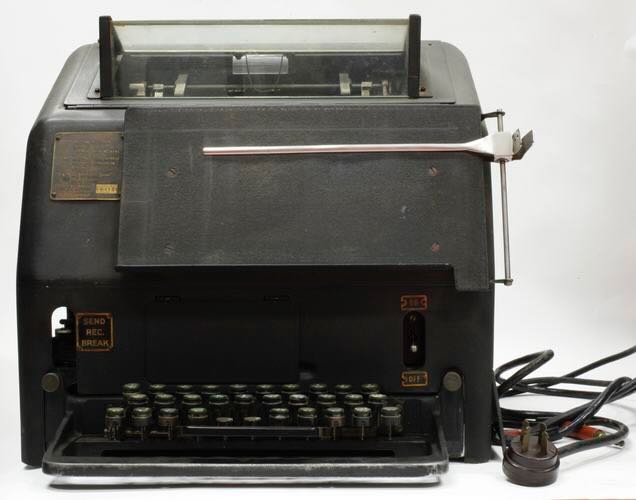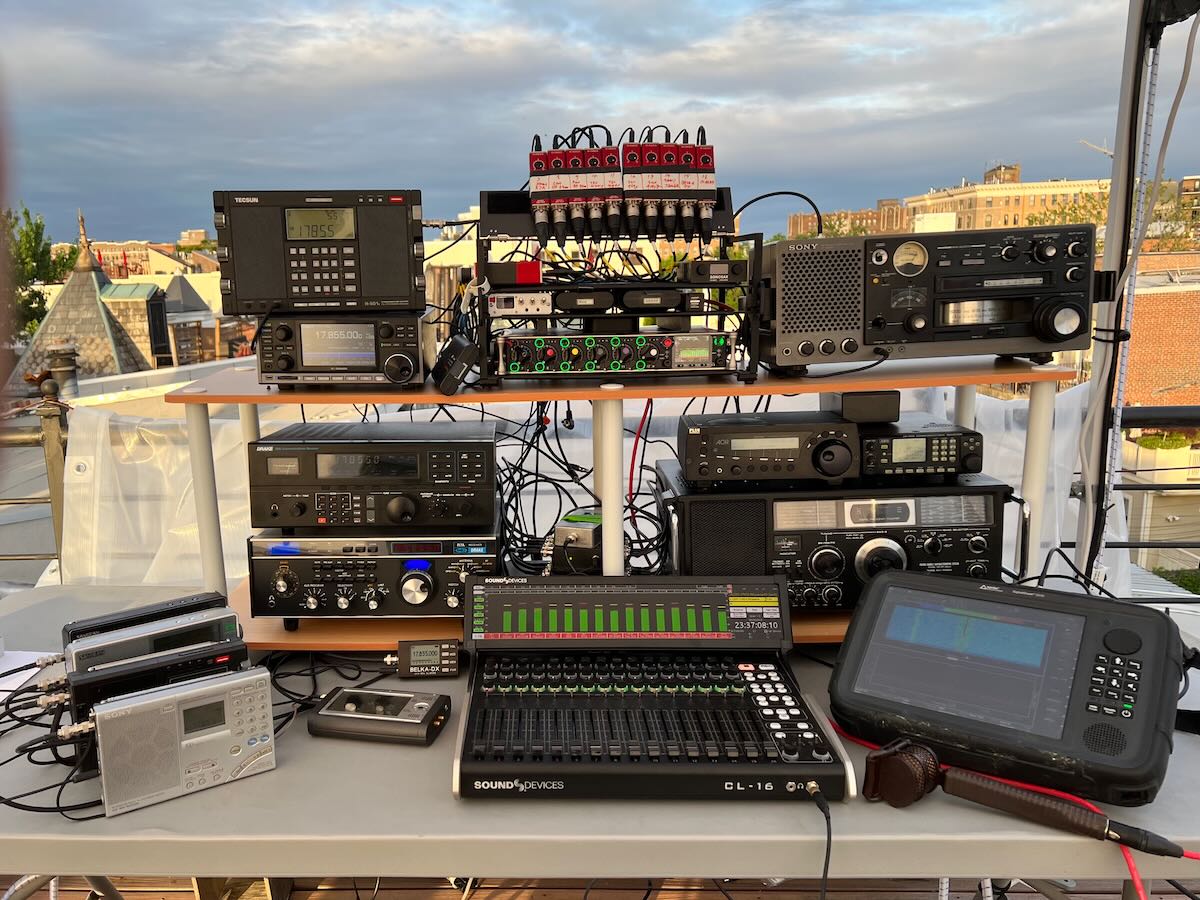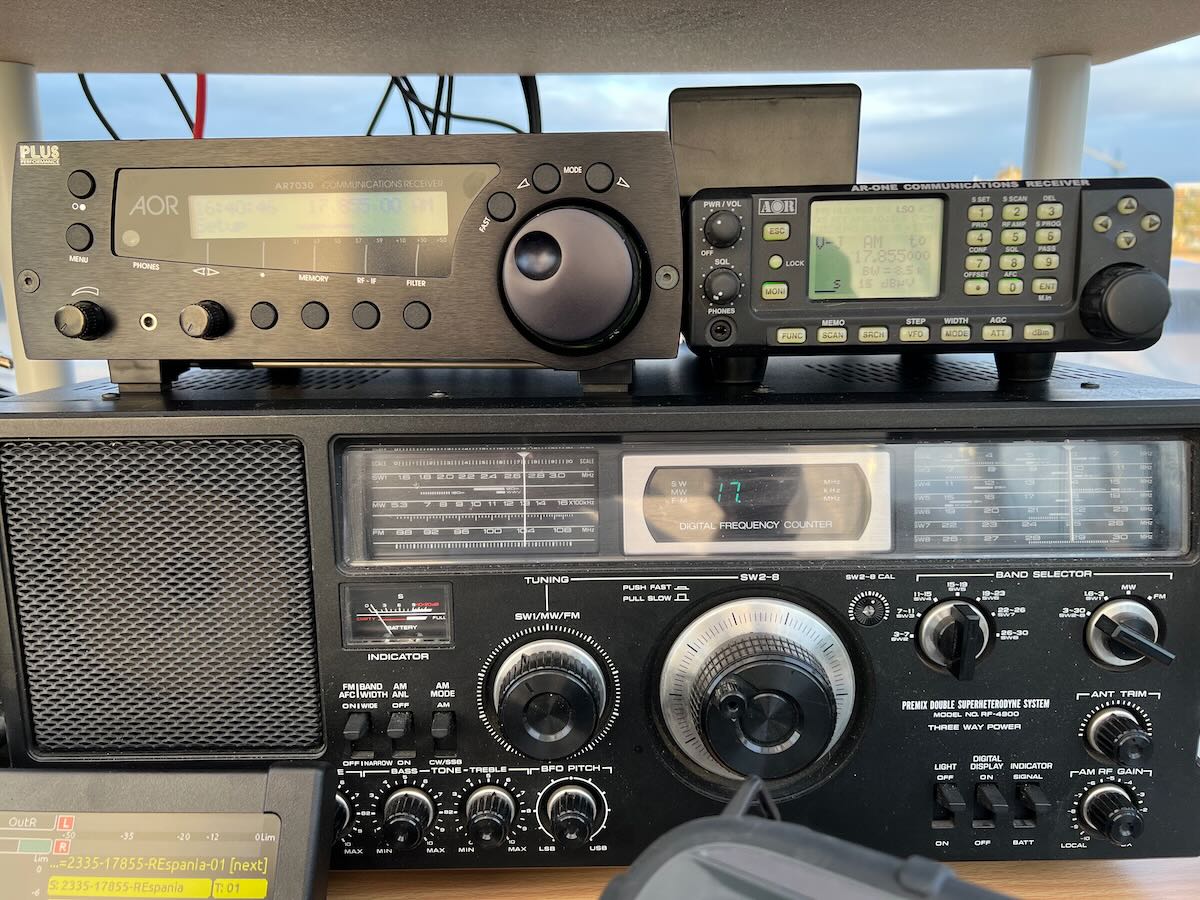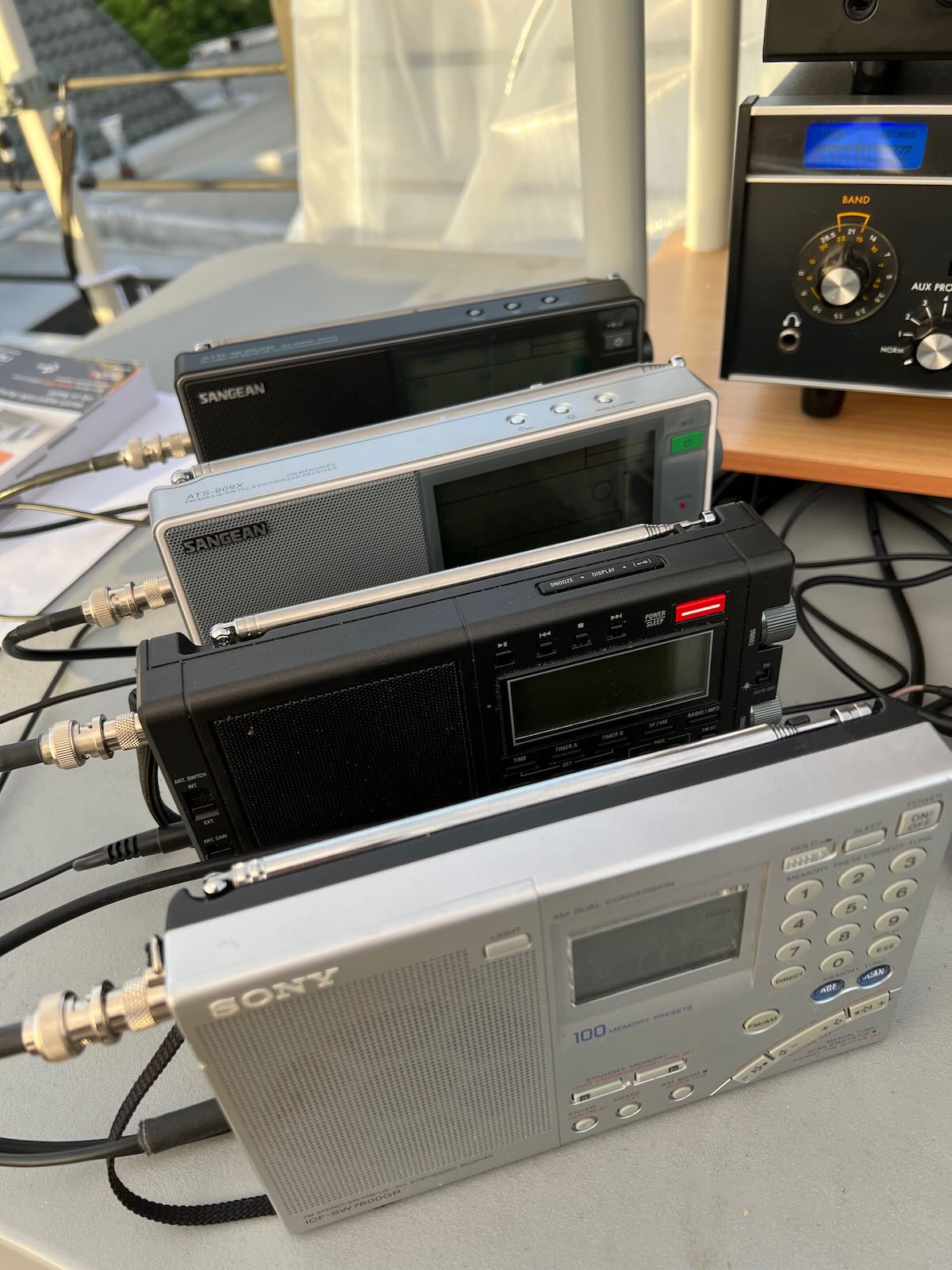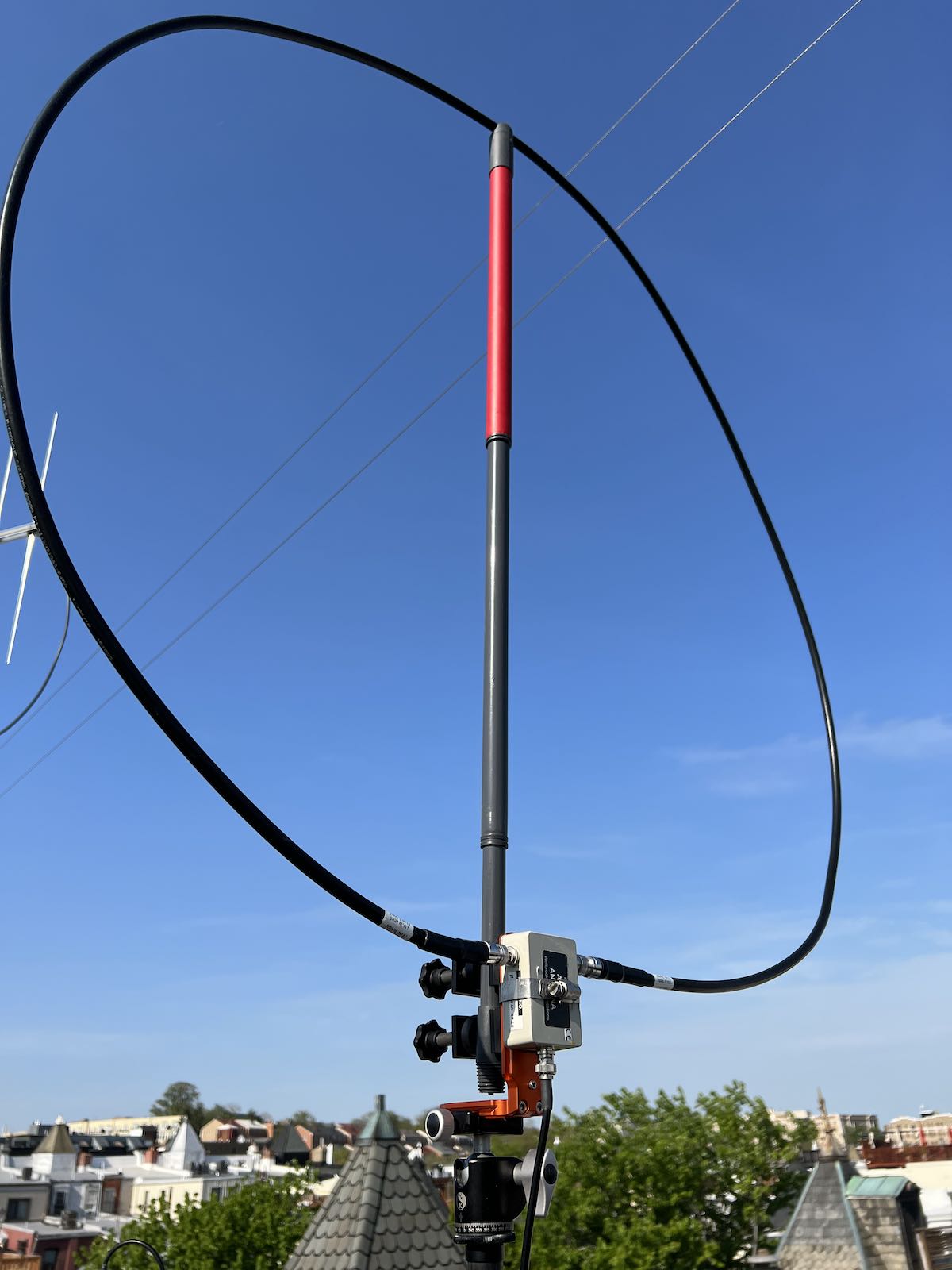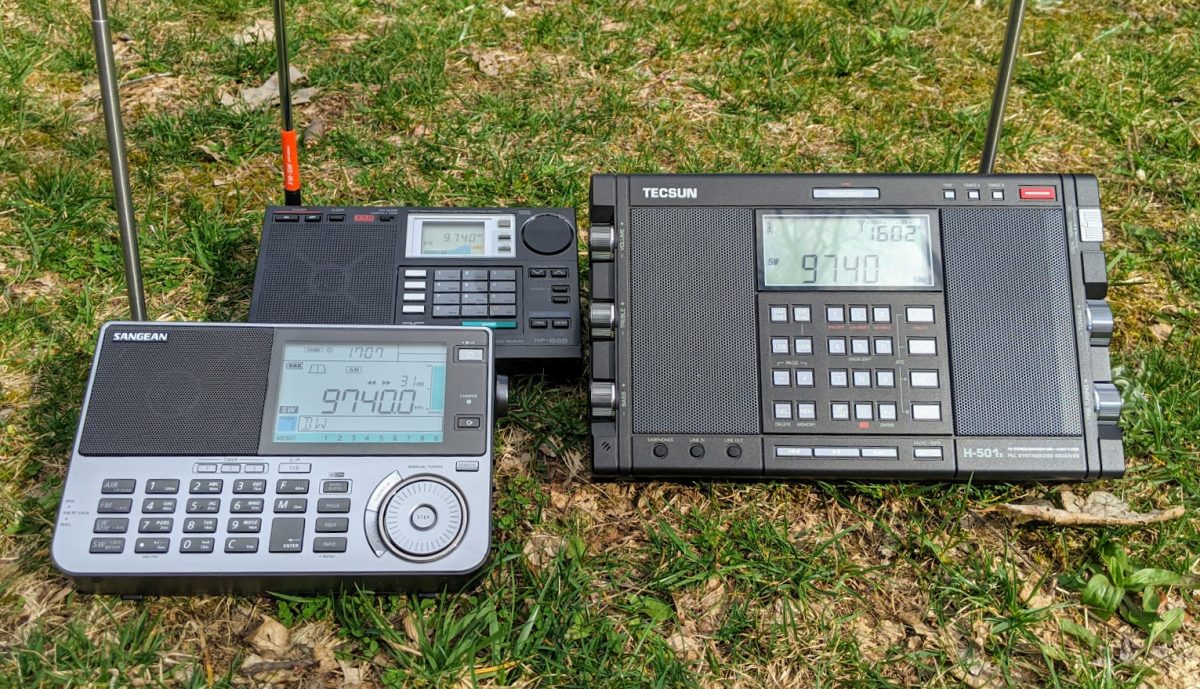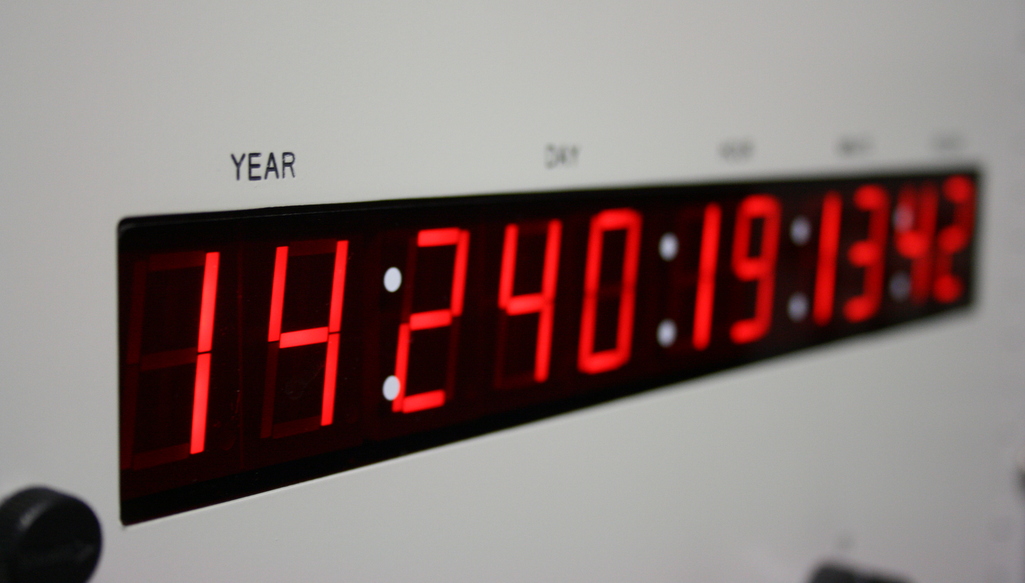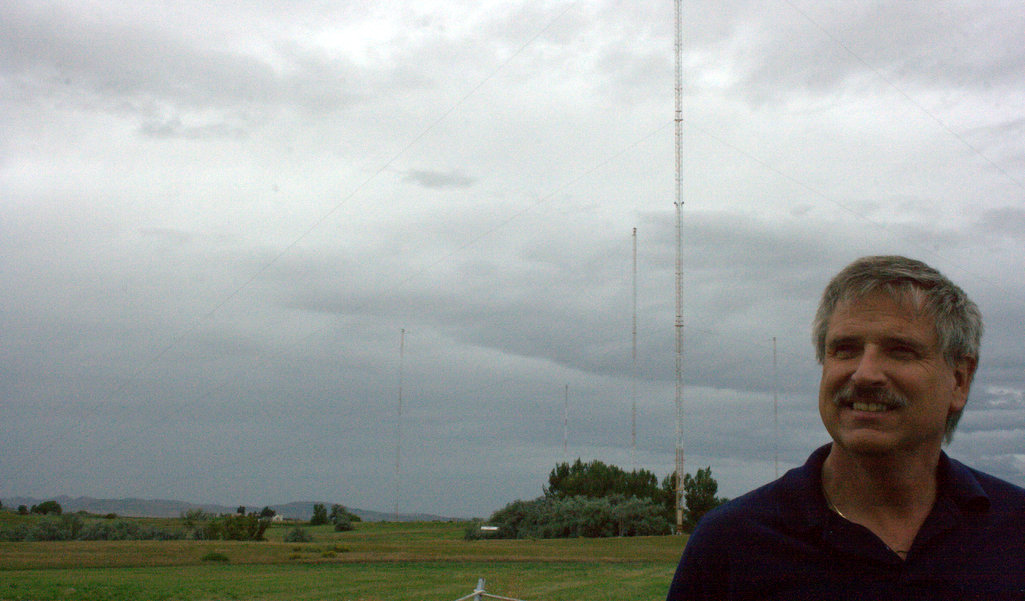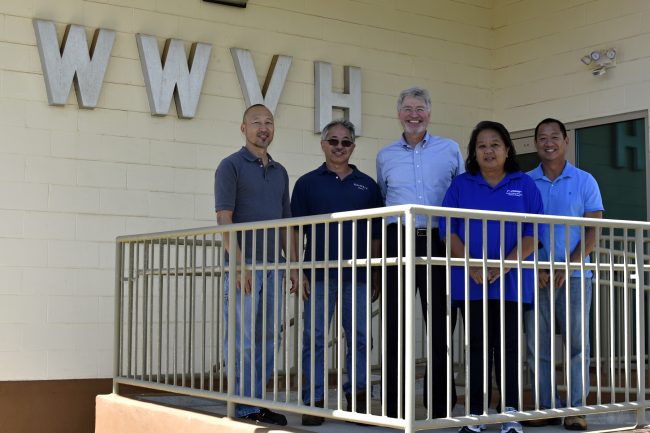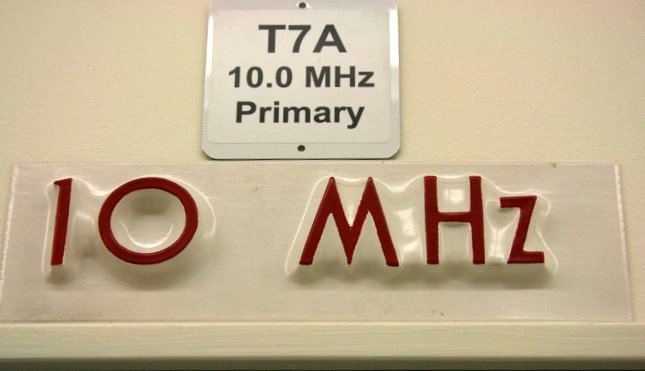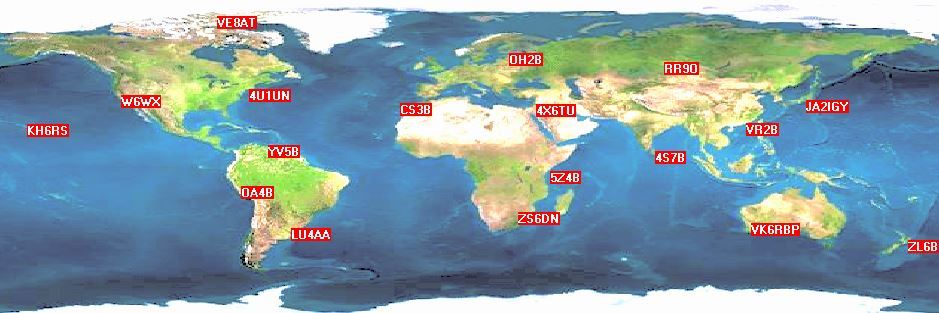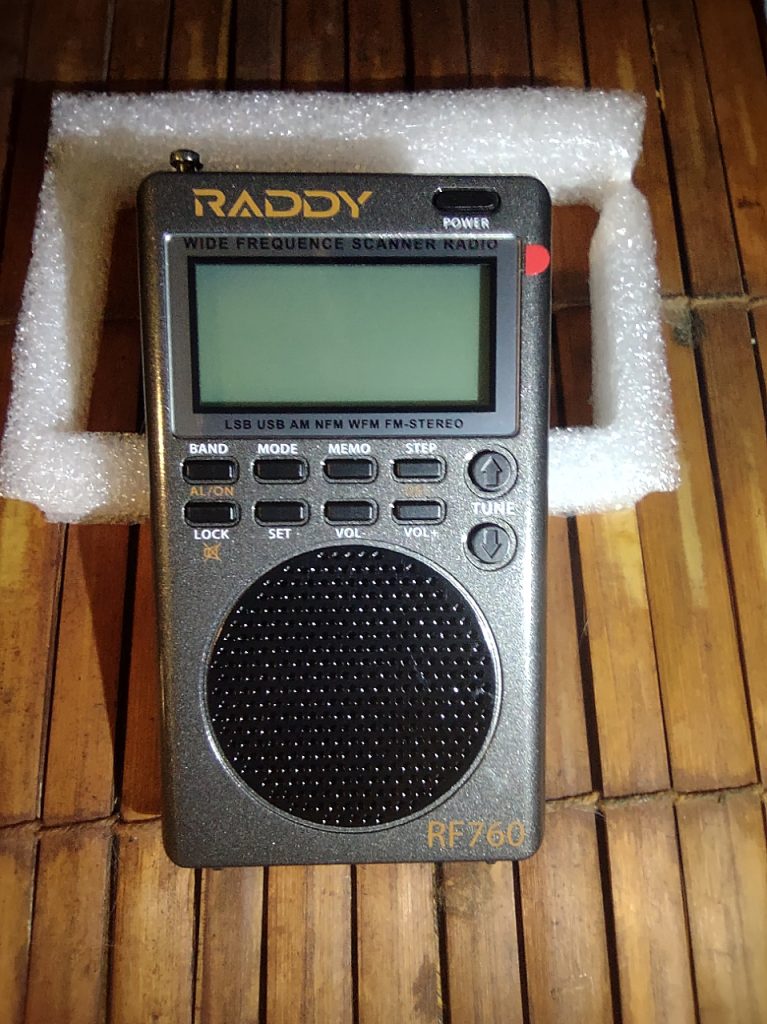
(Guest Post)
By Robert Gulley K4PKM
(Note: This review was requested by Radioddity, who provided the in-production radio to the reviewer, with no strings attached or pre-approval.)
I confess to have been a little bit skeptical when Thomas asked me to review this radio, not because of past experience with RADDY, but because tiny radios in general don’t usually impress me, and I have had plenty of them over the years and considered most of them a novelty. There are a few exceptions, of course, such as the C.Crane Skywave or the Tecsun PL-368, but for the most part there are simply too many limitations to tiny radios for my listening style (this one can literally fit in a shirt pocket!). Upon opening the box I was still skeptical, despite the rather impressive packaging and extras. But hey, a little skepticism is a good thing, right?!
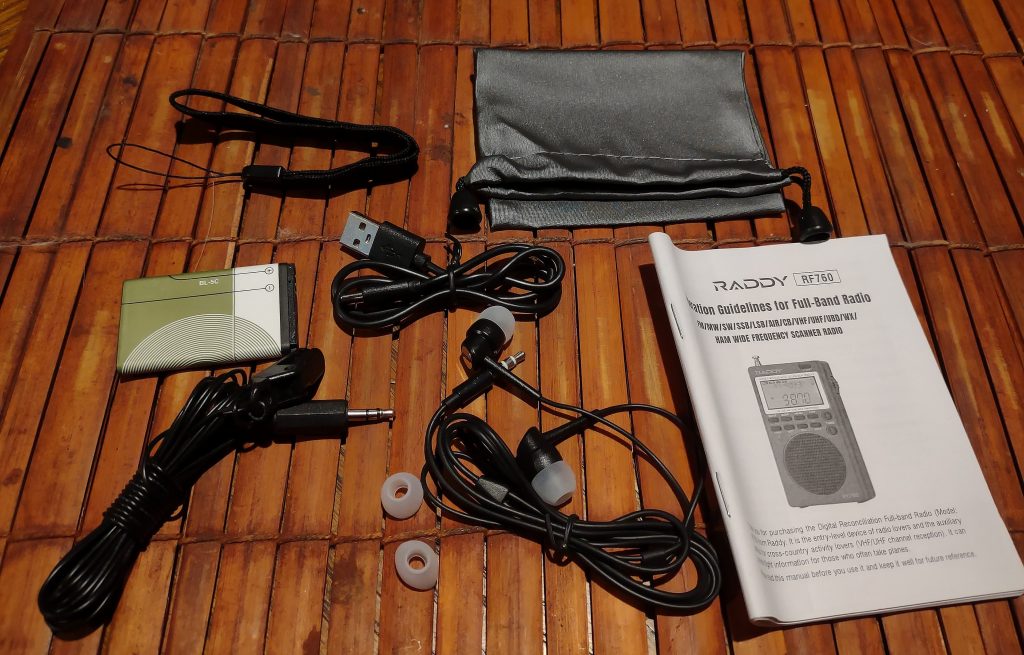
The radio comes with some nice accessories!
Accessories
The radio comes with a thin carry case to protect it from scratches, a rechargeable lithium battery, strap, earbuds and a wire antenna to improve shortwave reception. There is also a Type “C” USB cable for charging the battery. Oh, and a spare set of earbud covers – a nice touch!
Ergonomics
Picking up the radio I noticed right away it has a solid, comfortable feel to the unit. I start with that because most tiny radios feel very flimsy, and usually have something of a rough or hard plastic feel to them. This radio has a glossy feel to it, meaning it is comfortable and actually nice looking. Looks aside, I must admit the ergonomics of the radio impress me. I like the feel of it in my hand, and the controls are laid out well for one-handed operation. Being left-handed, that is not always the case, but the controls seem well thought out for either right- or left-handed folks.
As you can see in the images there are two primary rows of buttons, as well as a tuning knob on the right side of the radio. There is also a belt clip on the back which is unobtrusive – I can’t speak to its longevity as I really never clip a radio to my belt, but for those who do, I suspect it will hold up well with a little care.
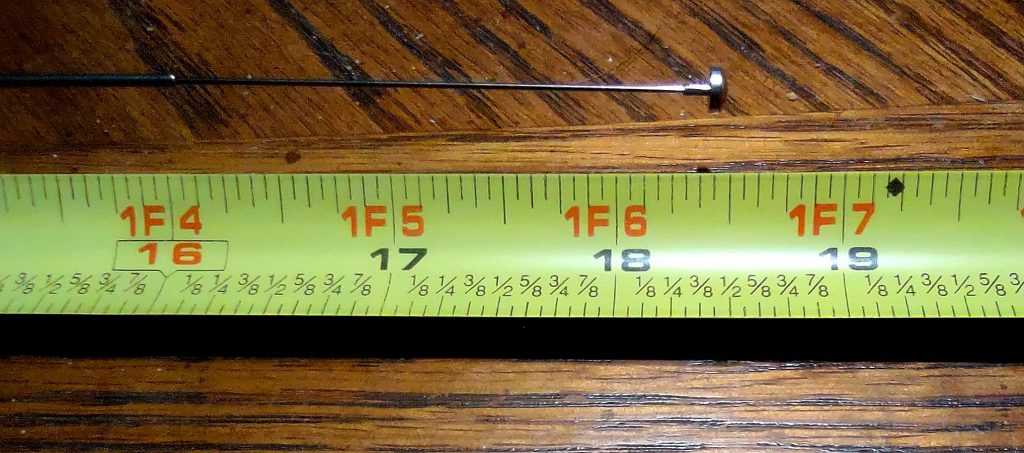
The telescopic antenna (fixed) is rather impressive as well, measuring ~18 inches in height when fully extended. As one might imagine, at this length the antenna is fairly fragile – I would not walk around with it fully extended while attached to my belt. For hand-holding it should be just fine, and standing upright on a table it does not tip over, but if out in an open-air environment with a strong breeze it will tip over, so a stand would be advisable.
The display is very readable, and the orange background light which pops on when making adjustments is quite nice. The light stays on for ~9 seconds after pushing any of the buttons. Another nice feature of the radio is a press of any button while the radio is off will turn on the display, indicating time, temperature, and battery strength. Yes, it has a built-in thermometer, and it seems quite accurate, at least on the unit I received.
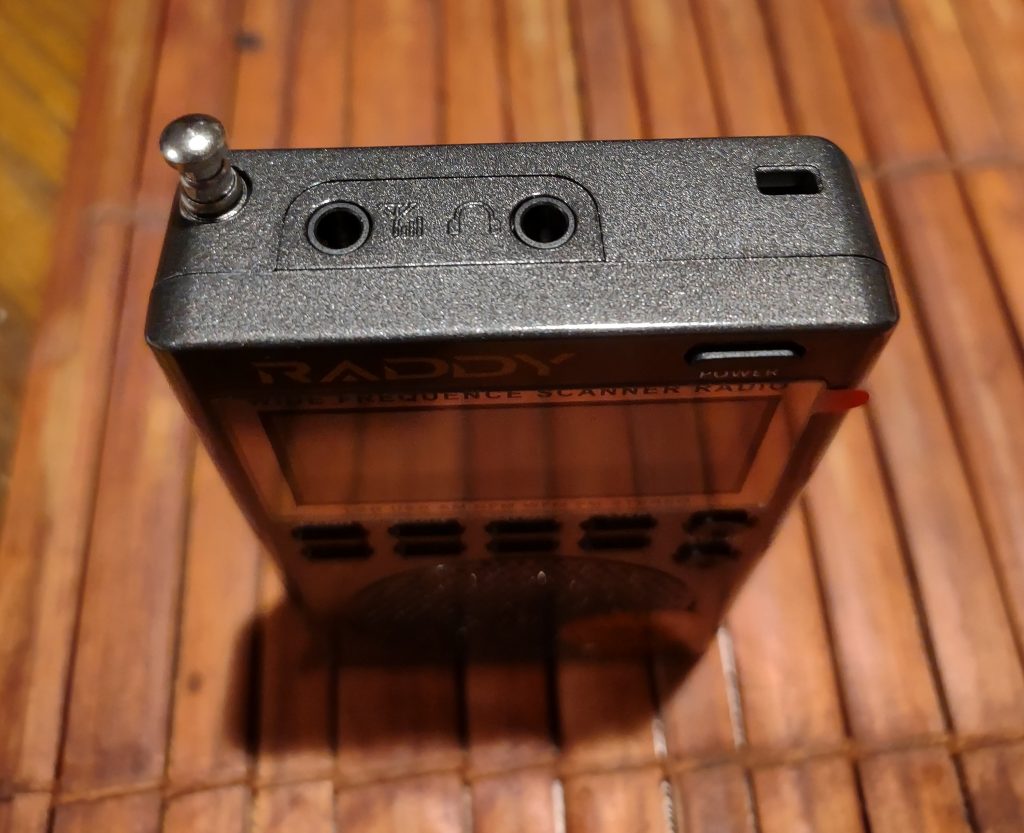
On top there is an external antenna jack, headphone jack, and slot for the strap.
Operation
For such a small radio it is literally packed with features. I will not go over all of them in this review, but I will cover some of the highlights as well as make mention of most features at least in passing. I was not expecting so many features in this little radio, so I was pleasantly surprised by some of the more advanced options.
Naturally the radio has AM/FM capabilities, as well as weather, air, VHF above the air band, SW and CB (yes, CB!). There is also a customizable frequency range setting for monitoring a desired set of user-selected frequencies. There are presets available for various modes listed in the manual, including predefined amateur radio bands and shortwave stations (always subject to change, of course!).
There is an attenuate function available if needed, as well as numerous step modes for tuning various modes. One interesting feature of the radio is two separate tuning methods, one by up and down buttons, and the other by a tuning knob on the side. These can be set independently of each other in terms of the step-change on a given band. This is particularly useful when scanning a band with the buttons after a station is found, because sometimes being slightly off frequency can produce a better signal – the scroll wheel can be used to make as little as 1 Hz changes.
Finally, there is a very useful bandwidth feature which can change between 3, 2.5, 2, 1.8, 1, and 6 kHz. Tuning is quite functional both with the scroll wheel and the tuning buttons. Holding down the tuning buttons will start a scan of the current band, and a longer press will speed up the scan if no stations are found initially. Unlike some scanning radios, when a signal is found, scanning stops and does not resume. I like that feature better than the alternative method of some radios restarting a scan after 5 seconds or similar. I want time to figure out what I am hearing, and a short stop does not really allow for that most of the time.
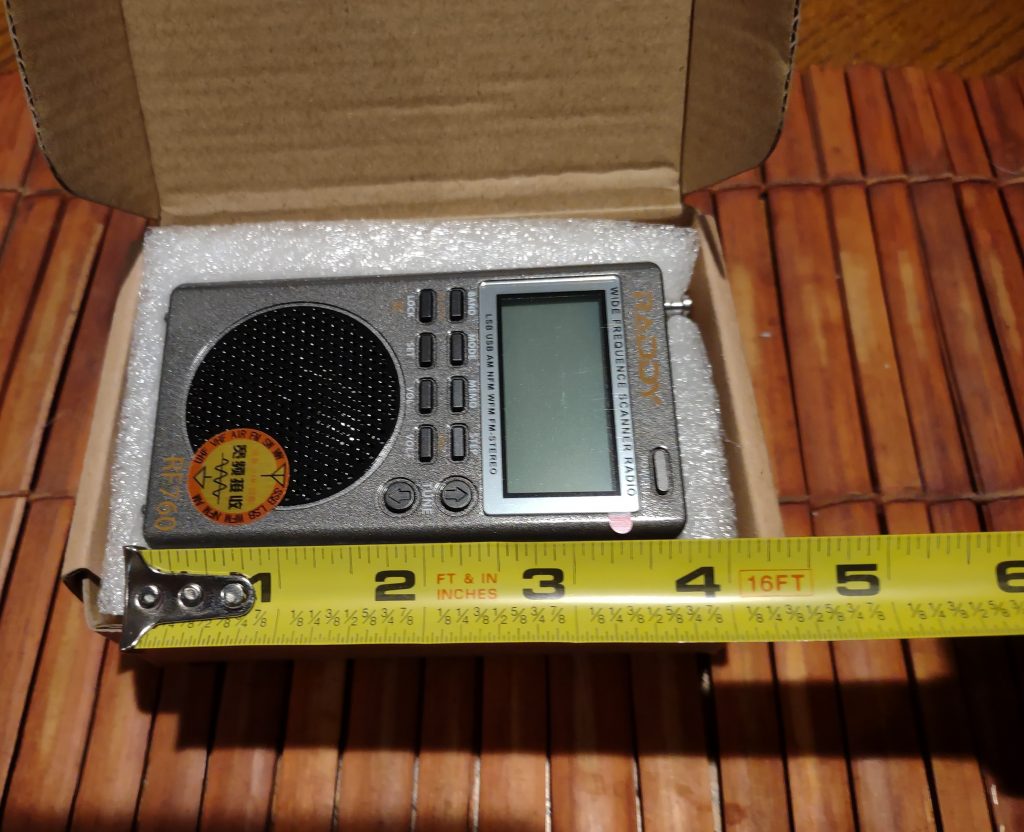
This is a very compact and lightweight radio!
Reception
I have to say I am impressed with this little radio. I have listened to amateur frequencies, shortwave frequencies, AM/FM, weather and tried airband (nothing close to me except a minor airfield). I live in a very quiet location in terms of local man-made interference, and this provides a great opportunity to really test out a radio’s sensitivity. My conclusion may surprise you as it did me. This is one sensitive radio, given its small form factor and limited antenna movement. (I did not test the external antenna option. While it has one, I felt it only fair to make tests using the built-in antenna on all the radios I compared it with, thus eliminating extraneous or otherwise hard to compare situations.)
Side by side with one of my favorite portables, the Sangean ATS-909X2, this little guy was right in there with difficult to receive stations. While the Sangean has a much larger speaker and therefore fuller sound, in terms of actual reception, most stations came in about equally. I even used an old, but very reliable Select-A-Tenna to boost AM reception on both radios, assuming the Sangean has a much larger ferrite rod given its size, and yet both performed equally well next to the passive antenna. Impressive!
On various shortwave and amateur stations the RADDY RF760 held its own again, picking up almost station for station what the Sangean and the Sony 7600 GR (another favorite of mine) did, in a package less than 1/3 the size of the Sony, and about ¼ the size of the Sangean. Am I going to dump my Sony and/or my Sangean? Of course not – there are many reasons I prefer those radios for my daily use. But if I were wanting to go extremely lightweight/portable, the RADDY is a keeper with impressive performance and most features one could want in a portable radio, all while still fitting in your shirt pocket. I truly do not know how one could get much better performance or features in another radio this size. It makes one wonder where can they go from here?
FM reception is also quite good, pulling in weaker stations while still being quite listenable. I have heard a few stations on this radio which I have not caught before, and this with some atmospheric noise due to storms in the region. Likewise, listening to AM while there were storms in the general area, still allowed for reasonable reception. As we all know AM broadcasts are highly susceptible to atmospheric noise, especially lightning, but this radio recovered nicely after each static crash. Some radios seem to linger longer in recovery after such events, but this radio was quick to bring back in the signals.
Negatives
In short, there really are not any glaring negatives to this radio, so allow me to point out some little things which are, after all more about personal preference than any deficiency in the radio. Your mileage may vary, as they say.
- An articulating antenna would be a nice touch, but that might require an increase in size, and likely would make the antenna more susceptible to damage. Many times, being able to bend an antenna this way or that can improve a signal.
- Changing the frequency steps can be a little fiddly at times, but that’s probably me
- When powering on, the short press acts like pressing any other button, meaning the light comes on, the time, temp, and battery power indicator displays. A longer press brings up the sleep timer. Two short presses turns on the radio, but not too short of presses. This takes a little getting used to, and I would prefer one longer press to turn on the radio, with the two short presses activating the sleep timer, but that, I know, is getting really nit-picky!
Conclusion
If you are in the market for a small, lightweight, but solid radio – this RF760 is definitely one you should consider. It is so light as to be almost weightless, compact but with easily reachable and useful controls, and has more modes and features than almost any similar radio I have run across. As an old-timer I have to shake my head in amazement at what can be packed into such a small radio these days! This certainly isn’t your grandpa’s transistor radio (and it’s even smaller!). Cheers!
Check out the Raddy RF760 at Radioddity.
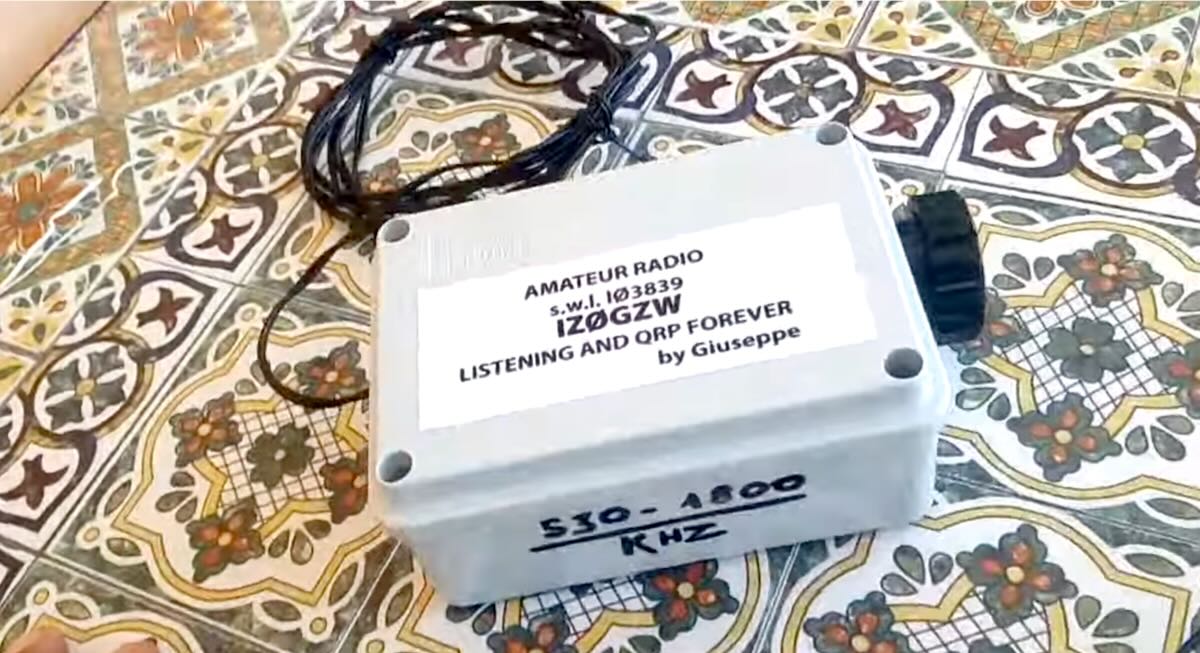 Many thanks to SWLing Post contributor, Giuseppe Morlè (IZ0GZW), who writes:
Many thanks to SWLing Post contributor, Giuseppe Morlè (IZ0GZW), who writes:
